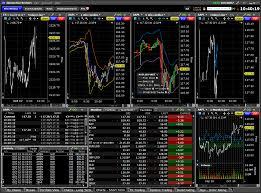Fed Tightening: Enough to Tame Inflation?

At the same time, the Fed has called for six rate increases in this cycle, which would take the fed funds rate to only between 1.5% and 1.75%. Doves vote for looser monetary policy, keeping interest rates low with the aim of boosting economic growth. This should increase spending, benefitting the economy and increasing employment, but it could come with the risk of rising inflation.
Why stock-market investors might get rattled by a stop-and-go Fed – MarketWatch
Why stock-market investors might get rattled by a stop-and-go Fed.
Posted: Tue, 13 Jun 2023 17:24:00 GMT [source]
Hawks and hawkish policy are more aggressive in nature, whether in terms of monetary policy or military stance during a potential conflict. In some cases, banks end up lending money more freely when interest rates are higher. High rates dissipate risk, making banks potentially more likely to approve borrowers with less-than-perfect credit histories. Moreover, if a country increases interest rates but its trading partners do not, that can result in a fall in the prices of imported goods. Recently, some Bank presidents have argued that the Fed should be willing to tolerate overshooting the 2 percent inflation goal because inflation has been consistently below that target in the last few years.
Can Hawks Also be Doves?
Janet Yellen, Fed chief from 2014 to 2018, was generally seen as a dove who was committed to maintaining low lending rates. Jerome Powell, named to the post in 2018, was rated as neutral (neither hawkish nor dovish) by the Bloomberg Intelligence Fed Spectrometer. Mester studied under Charles Plosser, the former president of the Fed Bank of Philadelphia and a committed hawk. She worries about inflation caused by the low interest rates championed by doves.

The risks of loss from investing in CFDs can be substantial and the value of your investments may fluctuate. 72% of retail client accounts lose money when trading CFDs, with this investment provider. CFDs are complex instruments and come with a high risk of losing money rapidly due to leverage.
Interest Rates
Contractionary monetary policy is when the Federal Reserve raises the federal funds rate, which influences other interest rates and increases the cost of borrowing. With lower demand, prices would fall, helping to tamper inflation—and businesses would hire fewer workers, or maybe even let some go. A hawkish Fed will assume an aggressive stance that prioritizes keeping inflation low or getting it lower. For example, Alan Greenspan, former chairman of the Federal Reserve between 1987 and 2006, was partly hawkish in 1987, supporting high-interest rates policies. But that stance changed, he started to favor low-interest rates (dovish) in his views of the Fed’s policies.
It is the Fed’s responsibility to balance economic growth and inflation, and it does this by manipulating interest rates. Jeff Lacker is not the first Richmond Fed president to object to the Fed’s conduct of monetary policy. “Until relatively recently, it was rare for a Reserve Bank president to be a Ph.D. economist,” says Wheelock. “This has led to the presidents having a stronger and more independent voice on monetary policy than they once did.” Still, forecasts and preferences for the focus of monetary policy often go hand in hand.
What Does Hawkish Mean in Economics?
In 2012, the Fed adopted an explicit long-run inflation goal of 2 percent, suggesting a consensus on the goal of price stability. In the wake of that decision, then-president of the Cleveland Fed Sandra Pianalto commented that the bird labels had become obsolete. Monetary hawkish policies may include raising interest rates, reducing the money supply, or implementing stricter lending requirements. While these policies can potentially help https://forexhero.info/image-processing-and-computer-vision-libraries-for/ to curb inflation, they may also lead to slower economic growth and higher unemployment rates. These terms are commonly used in the context of central banks and their decision-making processes, particularly in setting interest rates. If a central bank is said to be hawkish, it is likely to raise interest rates to combat inflation, while a dovish stance would indicate a tendency to keep interest rates low to stimulate the economy.
- Massachusetts Institute of Technology economists Paul Samuelson and Robert Solow found a similar pattern for prices and unemployment in the United States.
- At the same time, the Fed has called for six rate increases in this cycle, which would take the fed funds rate to only between 1.5% and 1.75%.
- It is important to note that these meetings play an important role in the economy and are widely anticipated by market watchers, traders, and consumers alike.
- Morgan Stanley Wealth Management is the trade name of Morgan Stanley Smith Barney LLC, a registered broker-dealer in the United States.
If a Hawkish policy is expected, then the news is priced in and you’ll unlikely see sudden spikes on the chart. So, investors will move their funds from other countries to earn higher interest rates here. This subsequently increases the inter-bank borrowing rate, mortgage rate and fixed deposit rate. The opposite are a dove and dovish policies, seen as more meek or conservative. “When you get to an FOMC meeting, you have to make a decision given the best information you have,” says Poole.
What are hawks and doves?
These risks include political and economic uncertainties of foreign countries as well as the risk of currency fluctuations. These risks are magnified in countries with emerging markets, since these countries may have relatively unstable governments and less established markets and economies. Policy makers and advisors who sit on the fence, shift their stance or do not take an outright hawkish or dovish position, are referred to as pigeons. Silver, thus, shines the brightest after the Fed’s dovish comments and plunges into despair after hawkish signals. Again, the hawkish surprise in October 2015 triggered a freefall in silver prices, as one can see in the chart below. As the world enters a new financial period of ‘modern monetary policy’, these terms could become less used to describe general views and more relevant in regards to individual decisions.
What is hawkish and dovish fed?
What is a Central Bank Hawk or Dove? In general, “hawks” are the members who tend to want tighter monetary policy to temper inflation and growth whilst “doves” tend to want looser monetary policy to support growth and inflation.
What happens if the Fed increases money supply?
An increase in the supply of money works both through lowering interest rates, which spurs investment, and through putting more money in the hands of consumers, making them feel wealthier, and thus stimulating spending.